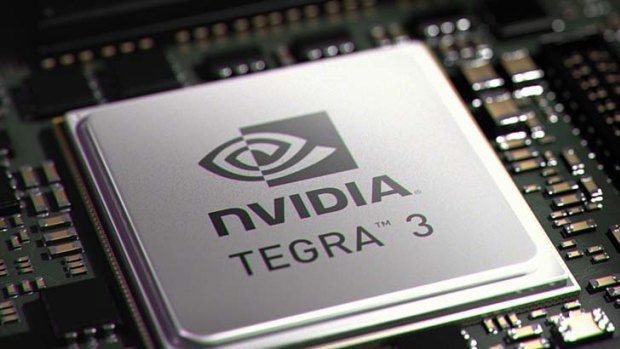This was published 12 years ago
Five technologies to look for in your next smartphone
Which features do you really need in a smartphone and which ones can you do without?
By Jenneth Orantia
Thinking of upgrading your phone this year? A lot has changed since you last went looking. Besides the obvious of having a new set of handsets to choose from, many of the technologies in the smartphones themselves have undergone radical transformations.
These aren't just your run-of-the-mill, incremental updates that you can count on with every device refresh (although there's plenty of that there too) - these are next-gen technologies that can potentially change the way you use your smartphone.

Beefy ... the 1.5GHz Tegra 3 quad-core chip, as found in the HTC One X.
The question is, which features do you really need and which ones can you do without? Here's a primer on the top five technologies that you can expect in the latest high-end handsets.
1. Quad-core processors
This just in from the "blow your mind" file: your next smartphone could have more processor cores than your existing desktop PC or notebook. Quad-core processors have finally landed on smartphones, and the recently-released HTC One X is leading the charge with its muscly 1.5GHz Tegra 3 quad-core chip.
Can you do without the four cores on your next mobile? Almost definitely. While the move from single- to dual-core translated to significantly faster performance all-round, the benefits of quad-core can only be seen on a handful of games that have been specifically designed for it, and while you're playing Full HD videos.
2. 720p resolution
Performance isn't the only area where smartphones are leap-frogging ahead. The display on your next smartphone could also pack more pixels than the screen on your desktop or notebook LCD monitor, resulting in print-like text and photos that are dripping in detail.
The Apple iPhone 4 got the ball rolling with its Retina Display two years ago, and the rest of the smartphone manufacturers have finally caught up, with Samsung, Sony and HTC all offering smartphones with 1280 x 720-pixel or higher displays.
Screens with 720p resolution aren't a must-have, but given you're staring at the smartphone display for nearly the entire time you're using it, it's one of the few upgrades that you'll really notice on a day-to-day basis.
3. 4.5" and larger displays
There's only so much you can cram onto a smartphone screen before you go cross-eyed trying to process it all. So why not bump it up to something larger? A bigger screen size makes typing, web browsing, reading, and almost everything else easier, although you'll also have to deal with a bigger form factor as a result.
Samsung broke the mold earlier this year with the 5.3" Galaxy Note, and there'll be a lot more smartphones coming out this year with 4.3", 4.5" and 4.7" displays, typically with qHD or 720p resolutions to fill out all the extra screen space.
4. 4G
Want faster-than-broadband speeds on your next smartphone? 4G can give it to you. While you can expect speeds of anywhere between 50kbps to 3Mbps with 3G, depending on your carrier and other network variables, 4G can go as fast as 40Mbps in real-world conditions.
But there's a catch. If you want 4G right now, you can pick from any carrier you want, as long as it's Telstra, and you'll only get the benefit of 4G speeds if you happen to live near capital city CBD or in certain regional areas. Optus is expected to launch its 4G network in Newcastle sometime in April, with rollouts in Sydney, Melbourne and Perth mid-year, while Vodafone has yet to commit to a timeline.
5. NFC
NFC, short for near field communication, is finding its way into more smartphones this year. While you can't make payments from NFC-equipped smartphones in Australia just yet (the relevant players are still getting their ducks in a row), there are other fun things you can do with NFC that involves wirelessly exchanging information between two devices.
The Nokia N9 lets you divert music playback to compatible speakers simply by touching the two together, while the Sony Xperia S lets you change a bunch of settings and perform tasks (like send a text message or load a particular music playlist) when you tap it on a bundled 'SmartTag'. Google has also built an 'Android Beam' feature into the latest version of its operating system that lets NFC-equipped Android smartphones share web pages, contacts and other information when you hold them close to each other.